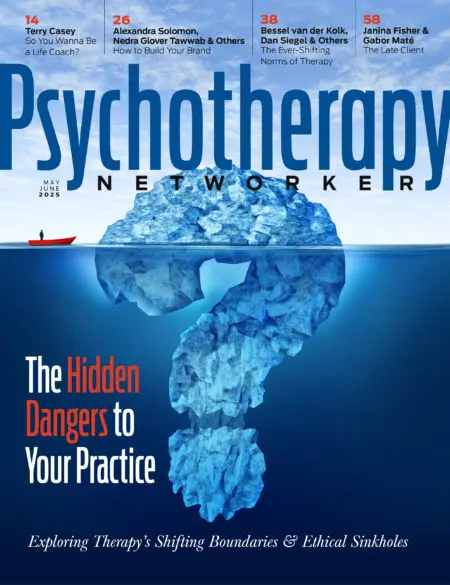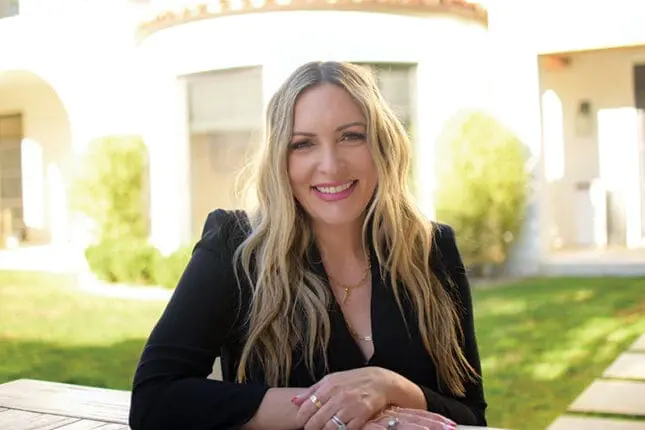Running a home with kids is a full-time job, but research shows that even today, when we often assume household labor is equitably divided in dual-income families, women in heterosexual relationships still suffer from depression, insomnia, digestive problems, and burnout related to shouldering most of the burden of running a home. American working mothers are in crisis. The stress gap that exists between men and women isn’t breaking news: the media regularly report on the topic. But what we sometimes fail to consider is how the unequal division of labor on the home front contributes to this gap.
When I was taking my toddler to daycare this morning, I spoke with a mom whose husband is a stay-at-home dad. She told me she’s still the one who keeps the household running smoothly, despite working full-time. “And I have one of the good ones,” she said, meaning her partner cooks, does the dishes, takes out the trash, picks the kids up from school, and takes turns putting them to bed. He’s warm, empathic, and engaged in the physical labor of parenting. But although his contribution matters a great deal, what he’s not doing is what Fair Play creator Eve Rodsky calls the executive labor. (Fair Play, which includes a card deck, is an approach to divvying up domestic responsibilities.) In other words, it’s one thing to go to the store and get the milk and another thing entirely to anticipate when the milk will run out; how much you’ll need for next week; who in your family will drink oat milk, low-fat milk, and half-and-half; and how you can avoid a return trip to the store by picking up the right snacks to avoid inevitable hunger meltdowns over the weekend.
The realm of executive labor is often murky and ill-defined, and because the mental energy required for it is taxing, particularly when the work is unacknowledged, it’s where resentments between partners can fester and grow toxic. Rodsky’s research has shown that while women are burdened and overwhelmed by the imbalance in household executive labor, men are also suffering. Without a clear picture of their role or how they’re contributing in valuable ways, they report feeling deeply unhappy.
As therapists, we often help partners articulate needs respectfully, set and maintain boundaries, and get clear about their values. We help them communicate well and build empathy for themselves and one another—all of which is important. But in the Fair Play approach, Rodsky goes a step further. She offers a solution that incorporates essential interpersonal skills with a practical tool that helps couples approach each household as a workplace in need of deep systemic change.

Livia Kent: I think some therapists might balk at the idea of treating a household, with all its emotional stresses and intimate struggles, as you would an organizational management project. You’re coming at this from a behavioral-design perspective, however. So let’s start there. How can you liken a corporate organization to a household? And why should therapists care about behavioral design?
Eve Rodsky: Successful organizations promote a culture of fairness and transparency, where employees understand what’s expected of them and feel good about the work they’re doing. For a household to operate successfully, everyone needs to understand their roles and feel valued.
As an organizational consultant and lawyer, I look at the world through the lens of behavioral design, since it’s one of the most powerful ways of creating change. Usually, lawyers create change by passing laws. If you want people to stop smoking, you pass laws that ban it in certain places. It may seem like this is very different from what therapists do, but in both instances, we’re helping people develop a new mindset and change behaviors.
Kent: To me, and perhaps most family therapists would agree, creating change in a family system seems more complicated than in an organization. A family has no HR department, no employee manual, no job descriptions. Where would you start?
Rodsky: Similar to how we’d create change in an organization, we’d move from operating on assumptions, which are rife with personal biases, to engaging in a structured decision-making process. This is a key concept I use in organizational management. Jessica Nordell cites a study in The End of Bia showing how the death rate of Black women in hospitals dropped when doctors and nurses began using structured criteria to administer blood clot medicine, rather than relying on their own assumptions about patients’ pain levels.
Structured decision-making is also a tool that liberates and empowers people. In day-to-day life, instead of getting lost in endless discussions about childhood wounds or tit-for-tats about who’s angry about what and why, you can move forward by making decisions together about what needs to get done and who’s going to do it. Once you can engage in structured decision-making, you have room to get into the deeper stuff.
Kent: As I listen to you, I’m thinking about my job. I understand what’s expected of me as editor in chief of the Networker. I know what I’m accountable for. There’s fairness and transparency in the way decisions get made, and that helps me feel good about my organization. Now, flip this to my home. You’re saying that if my kid’s father and I had made a clear and fair decision about who’s responsible for doing the dishes, they might not be piled up in the sink right now, attracting roaches and breeding resentments?
Rodsky: I mean, yes, but don’t feel bad. You’re not alone. In the home, it’s rare to see explicitly defined expectations prioritized in the same way they are in successful organizations. When I was interviewing couples for my Fair Play research, I’d ask, “What’s your role in the home? Do you feel like there are explicitly defined expectations of you in the home?” A lot of people—especially men—started crying in response. I was shocked by how many men admitted that they didn’t understand what their role was in the home, and how painful that felt to them. Some didn’t even understand what I meant when I asked the question, so I’d give an example: “Let’s say next week your son gets sick. Do you know who’s picking him up early from daycare? Are you assuming it’s your partner?” These questions can trigger shame and confusion. Partners don’t usually have explicitly stated, mutually agreed-upon expectations of one another.
As employees, we’re not very happy without fairness, transparency, and clear expectations, but then, at home, it’s like we lower our standards. When structured decision-making tools aren’t implemented, people get overwhelmed and burnt out. They suffer from decision fatigue. Have you ever felt like, “If someone asks me ‘What’s for dinner?’ one more time, I’m going to die”? That’s decision fatigue.
In one of my early surveys, I asked, “How do you know when to do something time sensitive and important, like taking out the dog?” One of my favorite answers came from a systems designer. “In my home,” he said, “we wait till our dog is about to take a piss on the rug.” This guy literally designed systems for a living, and that was his response. We don’t have to make decisions this way in our households! It’s stressful and unsustainable.
Kent: You can’t just wing it day by day, depending on who notices the dog is in distress first, or who cares more that the dishes piling up.
Rodsky: Just as a healthy organization is built on accountability and trust, so is a healthy partnership. We see great results when people at work delegate effectively and don’t feel like they have to follow up to make sure things were taken care of in the right way. The same goes for the home.
I know that if my husband, Seth, has the kids for the day on Sunday because I’m traveling, they’ll get to their sports events on time with the right equipment. I know they’ll be fed nutritious meals. I know they’ll get to bed at a decent hour without me having to step in. That’s a beautiful place to get to as a couple. These changes didn’t happen instantly. It’s 2023, and I started developing these ideas and putting them into practice in 2011. But I’ve never felt better about my home life. Feeling this kind of trust in the way Seth and I work together is a huge accomplishment.
Kent: You like to talk about another framework for project management: CPE. What is it, and why is it important in the home?
Rodsky: CPE stands for Conception, Planning, and Execution—the three main steps in managing any project. This framework has been around for more than 50 years, but it hasn’t been applied to running a home until now. The idea in project management is that there’s a way to break things down to reduce overwhelm and increase your chances of success. If someone’s doing the conception and planning parts of a project and someone else is doing the execution part, that’s what’s called a “control framework.” In other words, if I get to decide everything but then I tell you, “Livia, go buy me what I need after I’ve made every decision without including you, then—.”
Kent: Then I’m not a happy employee.
Rodsky: No, you’re not. Plus, when you get to the store, there’s a higher likelihood that you’ll misconstrue what I want and bring home the wrong thing. You worry you’ll get it wrong, or you detach and give up. It can be depressing to always be an executor—which is why, during my interviews, so many men expressed unhappiness with their roles in the home.
In the direct model of organizational management—when the conception, planning, and execution are done by the same person—there’s a lot more agency and context. We call it “the breakup” when certain people are doing conception and planning and a different person is doing execution.
Kent: I love what you said about how, in a household, the breakup translates to nagging.
Rodsky: Yes! But the term nagging has become gendered. I prefer to call it the RAT fuck, or if you want softer language, the RAT infestation. When you’re not doing a CPE follow-through, or not taking full ownership of a task, typically, you’ll get something called a RAT, a Random Assignment of a Task.
“You’ve told me I need to take out the trash 17 times in one hour,” your partner might snap at you in the face of a RAT. It’s a random task to him, but you know it’s important because your kid’s party is ending and you’re about to get an influx of dirty paper plates, wrapping paper, and bits of a shredded piñata that have to get tossed before the dog eats them.
In my Fair Play card deck, tasks are written out on different cards that partners divvy up equally, which they can trade back and forth. Seth holds the extracurricular sports card for our kids. Yesterday, he asked me to pick up my son at school because he had a meeting that ran late. I was like, “Wait—what?” He said, “Just get him and take him to his volleyball game.” So I went, but Ben’s friend had already picked him up and driven him to the volleyball game, so I ended up driving all the way to my son’s school, 20 minutes from our house, and then 40 minutes back, because I really did want to see Ben play. When I got home, I texted Seth, “That was a big RAT you gave me.” He wrote back, “100%. I would’ve hated it if you’d done that to me.” RATs do happen. It’s not like we’re always going to live in complete ownership of all our tasks, but at least you can say, “Okay, Livia. I’m giving you a RAT today.”
Kent: The problem is when you get a RAT infestation.
Rodsky: When RATs become the norm, you risk turning into your partner’s parent. It erodes sexual intimacy. When someone starts to view their partner as an irresponsible child, or as a nagging parent, it’s a turnoff. When I have to tell you what to do all the time, it’s not sexy.
Kent: In the context of a workplace, you’ll probably look for another job.
Rodsky: And if you’re the one detaching from the RATs, you’re freaking fired.
Kent: Or you’re quiet-quitting.
Rodsky: A lot of men quiet-quit because they get tired of experiencing control with no context. “I stopped trying to help my wife,” they’ve told me, “because everything I do is always wrong.” When you don’t have structured decision-making tools, you operate in a way that doesn’t work for any gender. I talk to polyamorous couples who tell me the same thing. Until you can decide who’s taking over what, you’ll experience decision-fatigue. Although many of these issues are centered in the gendered binary because of assumptions rooted in a historical context, these tools apply to any family.
In same-sex relationships, when there was a breakup of CPE, rather than a lot of RATs, we saw partners doubling up on executive tasks. This stemmed from gendered conditioning. In one of my favorite examples of this dynamic, each partner in a lesbian couple independently filled out the same science form giving their kid permission to work with “mystery powders.” One mom wrote on the form that her child couldn’t touch one of the powders because he had an egg allergy. The other mom wrote, “The powders are fine.” So the school was like, “Now we’re confused. You’re going to need to contact your doctor and send in medical documentation granting your child permission to participate in this science experiment.” By not settling on who’d own the task of completing school forms, they both ended up with more labor.
Kent: You’ve said developing an ownership mindset (as in, “this task is mine, and I’m accountable for it”) isn’t enough, and that people need to understand why their partner cares about something.
Rodsky: This is where therapists come in. Part of the practice of structured decision making involves understanding the why behind our resistance to doing things, or to doing them a particular way. Our whys usually come from our family backgrounds and individual traumas. Ownership is great, but people need to invest in communication, and to keep doing something even if they feel it matters more to their partner than it does to them.
In the interviews I conducted, men often said, “I need to get out of her way when it comes to feeding our kids because we disagree on what’s healthy.” This doesn’t work. Saying, “Well, you care more about that than I do, so you should own the task,” doesn’t foster trust and unity in a home. This is where a “minimum standard of care” (MSC) comes in, meaning a collaborative discussion of what’s reasonable in your own home. Figuring out the MSC around tasks involves exploring our whys.
Take the RAT Seth gave me. I don’t like playing sports. Sports are triggering for me because growing up, I was always the last person picked for teams. But sports are a really big part of Seth’s identity. When he explained the positive impact of being on teams growing up, my enthusiasm for supporting our kids’ participating in sports increased exponentially. He still had ownership of it, but I understood his MSC better. Because I now know his why, if he re-deals the sports card to me when he’s away, I’m less likely to drop the ball.
Plus, he may not hold that card forever, so getting that context from him helps me tremendously. In a workplace, you’re allowed to change tasks, so why not in the home? I can own cleaning this week, and you can own cleaning next week, assuming we’ve established and agreed on an MSC. It’ll look different depending on who owns the task, and we’ll probably both execute things differently, but at least we know the things that matter to us: dishes without any crusty stuff and making sure all the little garbage containers in the bathrooms get emptied out. Plus, neither of us likes pee on the toilet seat. People set and follow norms that allow them to share cards and make peace with the results.
An ownership mindset doesn’t mean you’re stuck forever cleaning toilet seats: it means you share tasks, including ones you don’t like. You can say, “I’m tired of doing this, so I’d like it to be yours for a time.”
Kent: All organizations have a mission statement. Does a family need one?
Rodsky: Hell yes! I came up with a family exercise where everyone picks a card from the Fair Play card deck and then shares what it means to them. You get to hear about one another’s values in a fun, indirect way, and you can weave what gets shared into a mission statement. You can find a million different family mission statements online, but this is a personal, creative way to connect with your core values as a family.
Livia Kent
Livia Kent, MFA, is the editor in chief of Psychotherapy Networker. She worked for 10 years with Rich Simon as managing editor of Psychotherapy Networker, and has collaborated with some of the most influential names in the mental health field on stories that have become widely read articles and bestselling books. She taught writing at American University as well as for various programs around the country. As a bibliotherapist, she’s facilitated therapy groups in Washington, DC-area schools and in the DC prison system. In 2020, she was named one of Folio Magazine’s Top Women in Media “Change-Makers.” She’s the recipient of Roux Magazine‘s Editor’s Choice Award, The Ledge Magazine‘s National Fiction Award, and American University’s Myra Sklarew Award for Original Novel.














